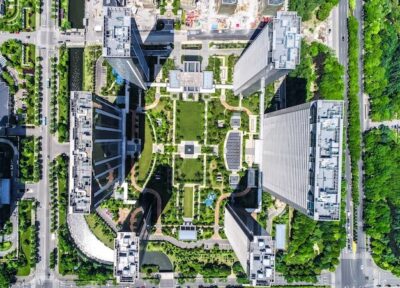
This site
is mobile
responsive

The Malaysian government is steadfast in its commitment to transforming the nation into a leading green investment hub in the region through a robust policy framework and strategic plan. The aim is to attract substantial investments in high-growth, high-value sectors while achieving the target of net zero carbon emission by 2050, as outlined in the National Energy Transition Roadmap (NETR) and the New Industrial Master Plan (NIMP) 2030.
Malaysia’s dedication to green initiatives has positioned it as a prominent destination for green investment in the region. This not only stimulates socio-economic growth but also creates new jobs and enhances skills development within the green industry.
Seven (7) levers have been identified to accelerate investment opportunities and establish Malaysia as a prime Green Investment Hub by 2030. The Green Investment Strategy (GIS) emphasised that Malaysia needs to increase its current levels of green investment by 7.5 times, requiring approximately RM 300 billion, to achieve the target. One of the key focus areas is Carbon Capture and Storage (CCS) and Carbon Capture Utilisation and Storage (CCUS), which involves collaborating with foreign emitters to develop domestic capture and utilisation in the future, as well as developing CCUS-specific policies and regulatory framework to facilitate the implementation of CCUS projects. By prioritising CCUS, Malaysia can harness its technological capabilities to become a regional leader in carbon management, attract specialised investments, and significantly mitigate its carbon footprint.
Another important aspect is the development of the Renewable Energy (RE) sectors. In May 2023, the Government reaffirmed its commitment to unlocking economic opportunities through a low-carbon transition, setting an ambitious target to achieve 70% RE installed capacity in the power mix by 2050. Malaysia aims to reinforce this ambition and accelerate the RE rollout by scaling up solar energy through the establishment of solar parks, upgrading grid infrastructure, and addressing bottlenecks in small hydro projects.
Energy Efficiency (EE) is also a crucial lever in Malaysia’s green investment strategy as it is cost effective and promotes resource optimisation. The focus is on moving up the energy service value chain and meeting the demand outlined in the Energy Efficiency Conservation Act. This will not only drive energy savings but also create new business opportunities.
Hydrogen presents itself as a versatile and future-proof source of low-carbon energy carrier. The transformative potential of a hydrogen economy not only reduces carbon footprint but also offers new economic opportunities. This is particularly evident in Sarawak, in collaboration with Japanese and South Korean partners respectively, where projects such as H2ornbill and H2biscus have made significant strides.

In the realm of Green Mobility, Malaysia aims to continue attracting investments in the Electrical Vehicle (EV) sector and leverage its strengths in rare earth elements (REE) and semiconductors. Additionally, the country is exploring the potential for scaling up marine and aviation fuel production based on future demand.
Bioenergy assumes a significant role in enhancing economic growth and fostering synergies between power operators and feedstock suppliers. By consolidating efforts in this sector, Malaysia can tap into its sizeable local supply base and drive sustainable energy production. NETR aims to capitalise Malaysia’s strong bioenergy potential, with focus on two key segments, namely agriculture-related bioenergy and non-agriculture waste such as used cooking oil (UCO) and municipal solid waste (MSW).
Lastly, Malaysia is committed to promoting the Circular Economy by tracking waste and focusing on the remanufacturing sector. This approach encourages resource efficiency, reduces waste generation, and creates opportunities for local businesses. Malaysia’s efforts in green investment have been recognised by the Energy Transition Index June 2023, which ranked Malaysia first in the region for energy transition. This recognition validates the country’s system performance and preparedness to attract global investments in clean technology and products.
These initiatives are part of Malaysia’s broader vision to achieve the objectives of the MADANI Economy Framework, which aims to position the country among the world’s top 30 largest economies and the top 12 in terms of global competitiveness within 10 years. By focusing on regionalisation, competitiveness, and value chain enhancement, Malaysia is committed to sustainable investments that benefit future generations as it stands as a testament to its commitment to future generations, acting as responsible stewards of the planet while promoting socio-economic goals for a better and more sustainable tomorrow.
MIDA observes the current and future trends of green investments, which commit to the Environmental, Social, and Governance (ESG) agenda. To learn more about investment opportunities in the green technology industry, please get in touch with the Green Technology Division, MIDA, at https://www.mida.gov.my/staffdirectory/green-technology-division/.
